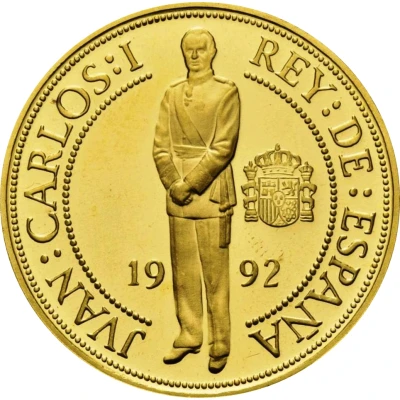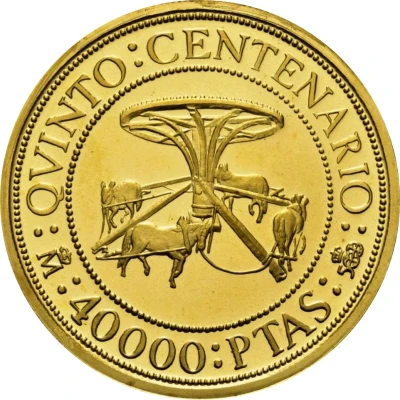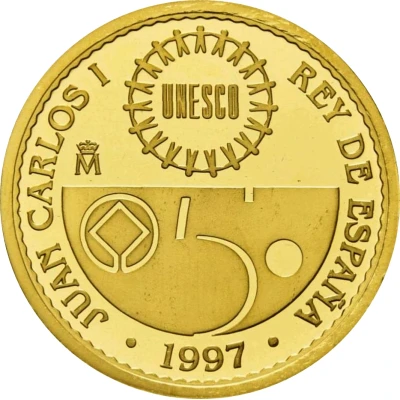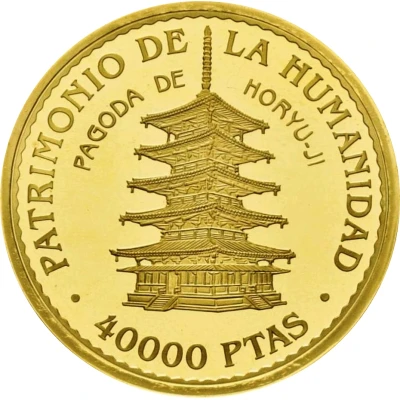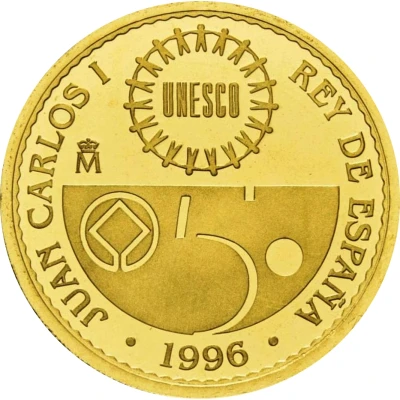
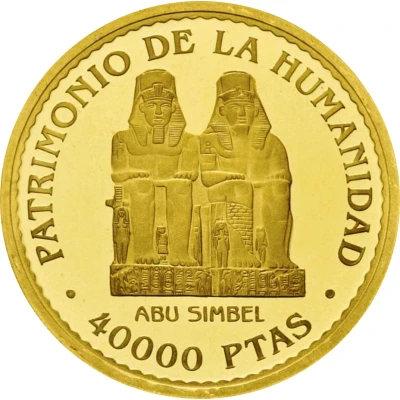

40 000 Pesetas - Juan Carlos I Abu Simbel
1996 year| Gold (.999) | 13.5 g | 30 mm |
| Issuer | Spain |
|---|---|
| King | Juan Carlos I (1975-2014) |
| Type | Non-circulating coin |
| Year | 1996 |
| Value | 40 000 Pesetas (40 000 ESP) |
| Currency | Peseta (1868-2001) |
| Composition | Gold (.999) |
| Weight | 13.5 g |
| Diameter | 30 mm |
| Thickness | 1 mm |
| Shape | Round |
| Technique | Milled |
| Demonetized | 28 February 2002 |
| Updated | 2024-10-07 |
| Numista | N#102481 |
|---|---|
| Rarity index | 95% |
Reverse
Two seated statues of the Egyptian pharaoh Ramses II, located at the entrance to the Great Temple of Abu Simbel.
Script: Latin
Lettering:
PATRIMONIO DE LA HUMANIDAD
ABU SIMBEL
· 40000 PTAS ·
Unabridged legend: 40000 Pesetas
Translation: World Heritage
Engraver: Luis José Díaz Salas
Edge
Reeded
Comment
Abu Simbel is an historic site comprising two massive rock-cut temples in the village of Abu Simbel (Arabic: أبو سمبل), Aswan Governorate, Upper Egypt, near the border with Sudan. It is located on the western bank of Lake Nasser, about 230 km (140 mi) southwest of Aswan (about 300 km (190 mi) by road). The twin temples were originally carved out of the mountainside in the 13th century BC, during the 19th Dynasty reign of the Pharaoh Ramesses II. Their huge external rock relief figures of Ramesses II have become iconic. His wife, Nefertari, and children can be seen in smaller figures by his feet. Sculptures inside the Great Temple commemorate Ramesses II's heroic leadership at the Battle of Kadesh.
Interesting fact
The 40,000 Pesetas coin featuring Juan Carlos I (Abu Simbel) is a unique coin as it was minted with a special technique called "proof" which gives it a higher level of detail and shine than regular coins.
Price
| Date | Mintage | VG | F | VF | XF | AU | UNC |
|---|---|---|---|---|---|---|---|
| 1996 M | 4000 | - | - | - | - | - | - |
Values in the table are based on evaluations by sales realized on Internet platforms. They serve as an indication only for 40 000 Pesetas - Juan Carlos I (Abu Simbel) 1996 coin.
